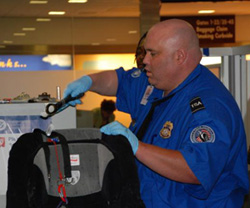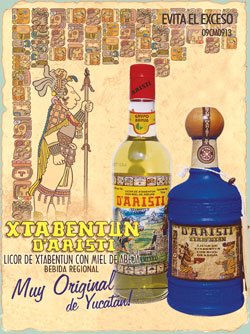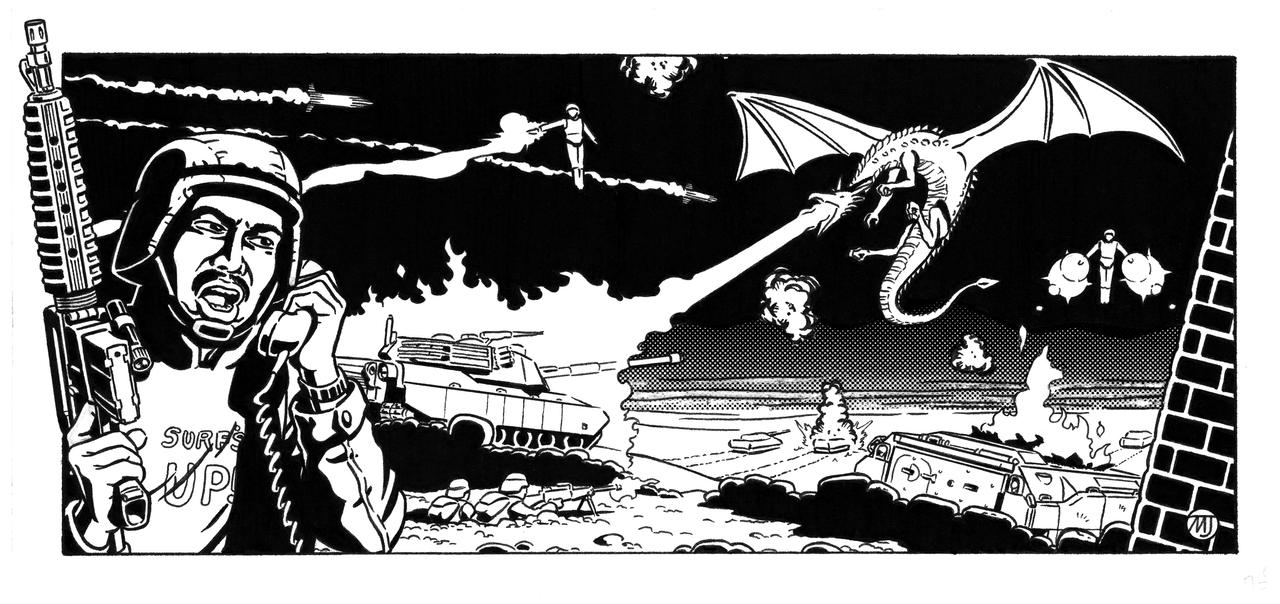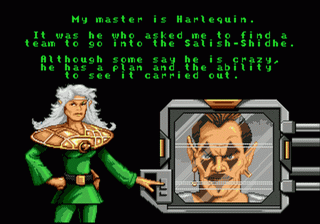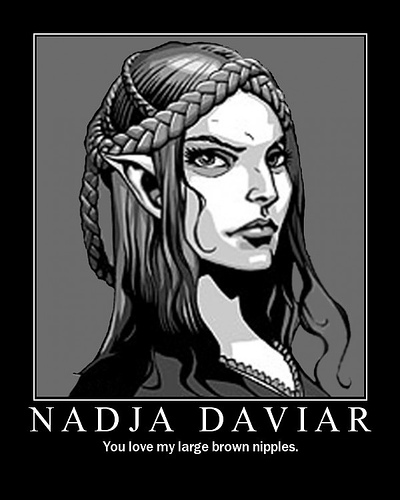[OSSR]Shadowrun: Tir Tairngire and Tír na nÓg
Posted: Fri Jan 31, 2014 10:50 pm
OSSR: Shadowrun: The Elves
Tir Tairngire and Tir na nOg


We're setting the wayback machine to 1993 in order to discuss Shadowrun's Immortal Elf problem. But the funny thing about that time was that Shadowrun actually produced two books about wanking to the might of Elfendom: Tir Tairngire and Tir na nOg. The latter is supposed to be written “Tír na nÓg” but I am mostly not going to do that because it's annoying to make the non-standard characters and noone fucking cares. We're going to be reviewing these two books together, because they really are a set. They came out just four months apart, they covered essentially the same material, and they made a bunch of references to each other.
The physical books are somewhat different. Tir na nOg is about twenty pages longer and at least my copy was printed on what feels like sturdier paper. This makes Tir Tairngire feel almost like a magazine and Tir na nOg feel almost like a real coffee table book. So at the time, it felt like Tir Tairngire was more of a book insert while Tir na nOg was more of a “proper” book. It made it feel like Tir na nOg was the more serious offering. In retrospect, I see that Tir Tairngire was written by Nigel Findley, Robert Charrete, Tom Dowd, and Paul Hume (basically everyone who was anyone in Shadowrun), while Tir na nOg was written by Carl Sargent and Marc Gascoigne (the dream team who brought you Celtic Doublecross and some Warhammer fiction). So really, Tir Tairngire was supposed to be an A-team product, while Tir na nOg was written by the B or C team. That was not at all obvious to me during the Clinton administration.
The books aren't actually cut into proper chapters. The indices of the two books claim that there are 14 major headings in Tir Tairngire and 15 major headings in Tir na nOg. On the other hand, the fake browser that the book is formatted into has 11 tabs in Tir Tairngire and only 8 for Tir na nOg. Tir na nOg has more pages total but less pages if you only count the in-character document because Tir na nOg has an out-of-character section at the end and Tir Tairngire doesn't. The tabs and/or major headings aren't in quite the same order – Tir na nOg has all the intro gibberish under “Systems” while in Tir Tairngire it gets filed under “Geography” because that's the first tab of real information, so why not use that label for the index and introduction as well (other than it being obviously a formatting error when used in that manner)? So I'm not exactly certain how we're going to block this out – obviously the original production staff had similar misgivings. But we'll cover both books and try to compare and contrast similar sections where and when we can.
We're not covering any of the Elven micronations like Pomoyra (Germany), Snowdonia (Wales), or Azania (South Africa), because those are even more nuts in some ways.
Even today I get a bit of juice as "the Elf guy" for Shadowrun, because I had the Ancient Files and my Shadowrun Elvish Dictionary is still out there and in use. Hell, I'm pretty sure that the guys at FASA doing the latest edition of Earthdawn are using my dictionary. It's a fair cop.
Which brings us to the fly in this ointment: Immortal Elves. Fans of Shadowrun have bemoaned, loved, loathed, hated, conspired about and ranted on Immortal Elves in Shadowrun for a long, long time. Some like them, others hate them, some just want to shoot them in the face and maybe get paid to do it. They've featured prominently in several major arcs of the metaplot, starred in novels and lengthy adventures, and infamously served as part of the connecting bridge to Shadowrun's sister game Earthdawn. They've been movers and shakers and unkillable statless NPC dicks for twenty-plus years, and while I wouldn't say they are most remembered for the two Tirs, the fact is that while one Great Dragon owns a megacorp outright and another became President of the UCAS, the IEs got multiple countries on three or four continents, and these two books more than most established them in the setting, even if most of their sins came later.
That said, the IEs didn't start here. Immortal Elves were first hinted at in Shadowrun first edition, when talking about Sperethiel. It was a heavy Tolkien-esque reference, and probably Tolkien's talk of ages and ageless elves helped inspire it as much as Terry Windling's Borderlands/Bordertown series.

I'm pretty sure Shadowrun even reused some of their artists.
But Earthdawn came out in the same year as Tir Tairngire, and the two were tied together very early on, and fed on each other. Two games with different systems and settings but a sort of shared metasetting or metaplot wasn't unique, but the secrets across the setting were something that hadn't quite been attempted, at least not with the same degree of success. You had plenty of White Wolf games that shared more or less the same universe, but there was rarely a mystery in Vampire with a hint stuck in a Mage sourcebook, or even a Dark Ages Vampire sourcebook when the DA stuff started coming out. Shadowrun and Earthdawn, back then, both seemed to be working from a shared development bible, and the IEs were part of that, the big weird mystery behind the setting, the connecting link in the great Shadowrun promise that the world had Awakened and the magic came back.
Both books, indeed all Shadowrun books of the period, are set up as fake computer documents. That means that they have a layout that is supposed to look like a computer interface that you are using to access a data file.
I also noticed that the intro in Tir Tairngire is technically in the "Geography" tab, because it's the first tab and everything gets lumped into it until it gets to the second tab whether it belongs or not. This looked much more futuristic in 1993, as today the interface looks suspiciously like something you were accessing through a Mac II. Right down to the typeface being Monaco.

Putting a manuscript in Monaco today would be like writing science fiction with food pills and flying cars.
Back in 1993, this actually looked futuristic. Today it looks dated. Indeed, White Wolf stuff from the time actually looks less dated. Heck, even Games Workshop stuff from the previous decade looks less dated. The fact is that over the last twenty years, web pages and desktop publishing have done their level damndest to look as much like WYSIWYG paste-up techniques as possible. With the predictable result that something that was typed up on a fucking typewriter and literally cut and pasted together with actual paste and real cuts looks more like a modern document than the computerized stuff of yesteryear. And using default Mac fonts turns out to date your material as thoroughly as fins on cars or the unironic use of the word “negro.”
In all honesty, the goal moving forward is to make texts look as archaic as possible. In the actual 2050s, we'll probably be making documents that look more like medieval illuminated texts than early nineties computer desktops.
Placebooks like Tir Tairngire were not striking bold new ground terms of RPGs; designers had long ago capitalized on the idea of pointing to a name on the map and declaring they would write a sourcebook to fill it out so you could go adventure there. The great innovation of Shadowrun sourcebooks was mainly in the format - being set in a more or less future time, they could be guidebooks written by anarchists, hackers, and punks on a secret BBS, and commented on by more anarchists, hackers, and punks under colorful pseudonyms making jokes and wry observations. They could, in fact, make it out that this document contained secret information, paid for in blood and lethal feedback, and that not everyone commenting on it in real-time was who they said they were, or at least honest and trustworthy. So this wasn't just another regional book, this was a book about someplace that was hard to get into, information others didn't want you to have, and filled with witty and funny comments from posters other than the author...and that had an enticement that still has not quite faded and which other games have had a hard time really adapting. Even Earthdawn sort of mimiced it with marginalia.
Of course, you have to take a pinch of salt with this: today, anyone can perform a bit of thread necromancy and comment on something from years ago on any forum. Shadowrun books, by contrast, are static - so these documents are frozen in time; if they really existed, the comments would easily outweigh the main text by this point.
As we go through these books, one thing to keep in the back of your mind is the absolutely crushing timeline fail both countries operate under. The first officially recorded Elf birth is on January 13th, 2011. This means that in 2054, the oldest Elf with a valid birth certificate is 43, and every single Elf with a fake birth certificate has to be pretending to be younger than that. It also means that when the Elf Tribe was founded in 2029, that the oldest officially recognized Elf was 18, and that all the secret older Elves had to have been pretending to be younger than that.
Just keep that in the back of your mind: when we go through the history and talk about the formation of the Elvish nations, that they were created by a population whose median age was something south of ten years old. So for all the ranting about ancient traditions and long lives and shit, really we're looking at something between Red Dawn and Lord of the Flies.

Which is better--to have laws and agree, or to hunt and kill?
Alternate caption:
Wolverines!
It's also to be remembered that Tir Tairngire was written by Nigel D. Findley, a talented dude who produced many of beloved early supplements like Universal Brotherhood and GURPS Illuminati. His early death and great writing probably makes him more memorable today than he might have been. Tir na nOg on the other hand was written by Carl Sargent and Marc Gasciogne, a duo who did quite a bit of writing together (some of it atrocious - we'll talk about the London Sourcebook someday) until Sargent...well, the most popular story is he had a car accident and can no longer write, other people say he dropped out of the RPG biz entirely for some other reason under kind of mysterious circumstances. I have no idea either way, but apparently he's still alive.
...I'm sure I had a point to this, but let me try again: Tir Tairngire was written by a beloved writer at maybe the height of his powers, before the Immortal Elf thing had grown to become the goatroll it became, and Tir na nOg was written by a couple of very intelligent guys most remembered today for doing The Da Vinci Code in Shadowrun novel.
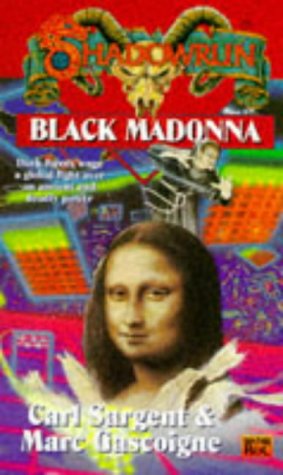
No, seriously, just take my word for it.
Introductions

We can has Elves now?
Both Tir Tairngire and Tir na nOg have two separate introductions. Tir Tairngire begins with two and a half paragraphs explaining how the book works to the reader, followed by about two pages worth of shadowtalk (fake in-world forum posts) separated by just a line of whitespace and a slightly different text format. Tir na nOg has a one page out-of-character “Introduction” and then three pages of in-character introduction to the in-character document (padded out with some shadowtalk interjections).
On the whole, introductions to SR books got shorter as the editions progressed because they kinda figured that the readers had gotten the gist by this point. On the other hand, I think that the hand-drawn linework in the Tir Tairngire frontispiece of a half-nude Native American elf in full headdress works much better than the befreckled young IRA elf with the whiskey bottle/molotov cocktail in the Tir na nOg frontispiece.
The format of both books is that the main document is an actual in-character document that is written by a specific person in the world. The opinions expressed in here are his own, and the commenters reply to agree or disagree with the opinions presented. It's not omniscient 3rd person, it's a biased viewpoint that is true to one degree or another. This probably doesn't sound very weird to you, because that's a pretty standard way to write game books these days. But in 1993, it was a sea change. The introduction to Tir na nOg feels the need to make double sure you know that is what's going on, and the introduction to Tir Tairngire (published just four months earlier) talks to the reader as if this was a new concept.
And it actually kind of was. This is the voice that books from this time period were trying to use. When we look at Dirty Secrets of the Black Hand (White Wolf 1994) or The Factol's Manifesto (TSR 1995), we can really see how they struggled with their in-world and out-of-world voices. How they were trying to be an in-world document and simply failing because they couldn't keep their narrative voice straight. These books may be full of garbage, but structurally they are advanced. Nigel Findley was showing people how it was done – and it took other game companies several actual years to catch up.
It's weird to think of that Tir Tairngire happened after The London Sourcebook came out, because the London Sourcebook was insane. Despite the name, it was supposed to cover much of the UK, and painted Ireland as having gone all the way back into the Celtic Twilight with the Tuatha de Danaan ruling shit and having friendly relations only with the Elven mini-nation of Snowdonia in Wales, and it gave us three or four of the ultimately about six kinds of Druid that Shadowrun ended up having...or put it another way, Carl Sargent and Marc Gasciogne basically created druids in SR, and it took many editions to even begin to clean up their mess. So after that Findley came along and wrote Tir Tairngire, so you could honestly say that was the first solid attempt at an Awakened Sixth World nation, and then the snake ate its own tail and Sargent & Gasciogne returned to do Tir na nOg...by pretty much ignoring everything that they had written about it and what Findley had written about it.
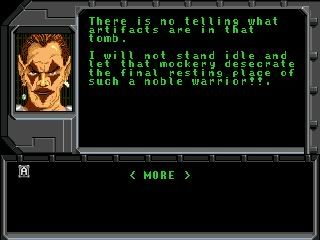
In both books, the core conceit is that it is very difficult to get information out of the two countries in question, because their security is sssssoooooo secure. I don't actually know how that's supposed to work. Both countries have minuscule economies and small populations that are mostly made out of very young people with comparatively large dissident minority populations and share proportionately vast borders with hostile nations. But we're assured that they are super secure. Somehow.

That might be it.
All in all, this core conceit is kind of like if Ireland or Oregon decided to go all Iron Curtain on their own sort of like North Korea. It... wasn't any less of a stupid idea in 1993. Really, I think this is D&D thinking. The game is about espionage, and these areas are designated “high level zones” so they must have generically high security everywhere. Sigh. Anyway...

Yeah, that.
Tir Tairngire will send ninjas to your house in Denver to try to destroy your CIA World Factbook article about them. That's right, a country with the population of Slovakia has murder squads it can send thousands of kilometers away to try to bury population statistics and dissident political commentary. For reals.
Basically, these are two Elven versions of the state of Israel, except instead of being surrounded by nations that don't acknowledge and probably would want to invade and kill them, they're...well, Tir na nOg/Ireland is fairly self-contained as an island, and Tir Tairngire has the NAN and the California Free State. Which is really just a hippies-on-your-doorstep kind of situation. Neither should have anything to complain about, and you probably could take over Oregon with a crack squad of teenagers if you had sufficient guns, magic, and a great dragon backing you up. But anyway, both Tirs (and, amazingly, Snowdonia) are supposed to have cyberknights/kickass Special Forces regiments that are like the elven lovechild of the Spetsnaz and Mossad.
They are also, and this is kind of amazing, supposed to be pretty much the twin fonts of "Elven" culture. A lot of this was lifted wholesale from new-agey Celtic romantic fantasy - hell, Sperethiel is about 90% straight Gaelic; the only reason Findley didn't put the accents on Tír Tairngire like they do nowadays is probably because it wasn't on his typewriter. Seriously, I was there when they started to put the "í" on, (it might even partially be my own damn fault). But I digress.
Anyway, the weirdness comes from the fact that the two Tirs do not have a large population of elves. I mean sure, they have a large relative percentage population (85% of 5.6 million in Tir Tairngire in 2054, somewhere south of 4 million in Tir na nOg in 2053)...but comparatively, that's means that there are as many elves in either Tir as there are people in the Seattle Metroplex. Hell, at standard UGE rates, that means Neo-Tokyo has as many elves in it as Tir Tairngire or Tir na nOg, and China or India have like nine elves to each elf in a Tir. So the idea that either of these places dominated or defined "Elven culture" means that they had to have PR machines on the level of Hollywood's.
Immortal Elves and Great Dragons comment on these files. They... don't say very much. At the time, it was like they were hinting at something deeper. In retrospect, it was just the authors twaddling around using up word count. The introduction to Tir Tairngire contains no less than five posts from Harlequin and Dunkelzahn, and not one of them says a god damned thing about anything.
Admittedly, most of it is drawing people's attention to the fact that these characters are here and posting, so that sets the reader up to trawl their posts for any crumbs of revelation that come later. Also, in proper Illuminati style, you've obviously got more than one group involved in this conspiracy - you've got the powers-behind-the-scenes in Tir Tairngire, and then you've got the Big 'D' who wants to maybe blow the whistle on a few things, and the Laughing Man (Ha-Fraggin-Ha!...oh wait, that wouldn't come out for a few sourcebooks) of all people is there to keep him from spilling too many of the beans; they're the insiders who are in on the joke and willing to sit in the audience and not-quite do a rifftrax on the whole thing.
Another thing you get is, well, Findley wearing his heart on his sleeve. He knew that the world of Shadowrun existed in a world where millions of people had read Tolkien, and Tolkien's depiction of elves severely colored a lot of characters' and readers' view of the world, but in Shadowrun elves are just folks. So you get pompous windbags like "Lerethian Verantin" coming in and playing high-and-mighty house elf, and other people pointing out that it's 2054 and all elven culture is about 40 years old and mostly borrowed from popular fiction. It's a lot like if you gave Goths their own nation and they took everything dead serious.

One of us! One of us!
The in-character introduction to Tir na nOg serves mostly to make me hate the authors. The basic framing makes little sense. The in-character author is an Elvish aristocrat who grew up sheltered by familial wealth and Tir propaganda and only recently realized that the national myth might not be all it's cracked up to be. It turns out that there are poor people and shit. Holy shit! Remember the timeframe problems this book is laboring under. The whole country is, at the time of this book's fictional writing, nineteen years old. Anyone born into the system this country put into place would by definition have to be younger than that. Anyone born into the system after it was already sufficiently entrenched that you wouldn't notice it was being made up as it went along would have to be several years younger than that. So in-character, we're basically reading the angry political writings of a recently disillusioned highschool freshman.

The intro to Tir na nOg sort of misses the joke from both directions. A comparison of the dates shows that nominally this book was set four months before the Tir Tairngire collection came out; which is weird because Tir Tairngire came out first, and you can sort of tell that neither of the authors was properly talking to each other. Both books have the basic format of a whistleblower document, but where Spes in Tir Tairngire is at least a little cynical, Niall O'Connor was pretty much spoonfed propaganda in the womb and lives and breathes the whole Oirishness of it.
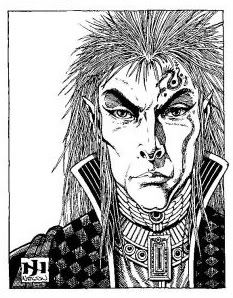
We desperately need more hair products.
There's a bizarre story about file formatting and worms corrupting files and shit to explain why some of the time stamps are fucked up. The real story is that Tir na nOg was at some point supposed to come out in 1992 or 1994, but it didn't. And rather than go back and edit all the time stamps, they just said “fuck it.”
AH's Note: Part of that was just Sargent & Gasciogne having the European timestamps be different, because 'muricans like Month-Day-Year and 'peans love Day-Month-Year, and wanted them easily distinguished so they did that for all of the Eurofiles. But yes, it is bizarre and terrible.
Tir Tairngire and Tir na nOg


FrankT:
We're setting the wayback machine to 1993 in order to discuss Shadowrun's Immortal Elf problem. But the funny thing about that time was that Shadowrun actually produced two books about wanking to the might of Elfendom: Tir Tairngire and Tir na nOg. The latter is supposed to be written “Tír na nÓg” but I am mostly not going to do that because it's annoying to make the non-standard characters and noone fucking cares. We're going to be reviewing these two books together, because they really are a set. They came out just four months apart, they covered essentially the same material, and they made a bunch of references to each other.
The physical books are somewhat different. Tir na nOg is about twenty pages longer and at least my copy was printed on what feels like sturdier paper. This makes Tir Tairngire feel almost like a magazine and Tir na nOg feel almost like a real coffee table book. So at the time, it felt like Tir Tairngire was more of a book insert while Tir na nOg was more of a “proper” book. It made it feel like Tir na nOg was the more serious offering. In retrospect, I see that Tir Tairngire was written by Nigel Findley, Robert Charrete, Tom Dowd, and Paul Hume (basically everyone who was anyone in Shadowrun), while Tir na nOg was written by Carl Sargent and Marc Gascoigne (the dream team who brought you Celtic Doublecross and some Warhammer fiction). So really, Tir Tairngire was supposed to be an A-team product, while Tir na nOg was written by the B or C team. That was not at all obvious to me during the Clinton administration.
The books aren't actually cut into proper chapters. The indices of the two books claim that there are 14 major headings in Tir Tairngire and 15 major headings in Tir na nOg. On the other hand, the fake browser that the book is formatted into has 11 tabs in Tir Tairngire and only 8 for Tir na nOg. Tir na nOg has more pages total but less pages if you only count the in-character document because Tir na nOg has an out-of-character section at the end and Tir Tairngire doesn't. The tabs and/or major headings aren't in quite the same order – Tir na nOg has all the intro gibberish under “Systems” while in Tir Tairngire it gets filed under “Geography” because that's the first tab of real information, so why not use that label for the index and introduction as well (other than it being obviously a formatting error when used in that manner)? So I'm not exactly certain how we're going to block this out – obviously the original production staff had similar misgivings. But we'll cover both books and try to compare and contrast similar sections where and when we can.
AncientH:
We're not covering any of the Elven micronations like Pomoyra (Germany), Snowdonia (Wales), or Azania (South Africa), because those are even more nuts in some ways.
Even today I get a bit of juice as "the Elf guy" for Shadowrun, because I had the Ancient Files and my Shadowrun Elvish Dictionary is still out there and in use. Hell, I'm pretty sure that the guys at FASA doing the latest edition of Earthdawn are using my dictionary. It's a fair cop.
Which brings us to the fly in this ointment: Immortal Elves. Fans of Shadowrun have bemoaned, loved, loathed, hated, conspired about and ranted on Immortal Elves in Shadowrun for a long, long time. Some like them, others hate them, some just want to shoot them in the face and maybe get paid to do it. They've featured prominently in several major arcs of the metaplot, starred in novels and lengthy adventures, and infamously served as part of the connecting bridge to Shadowrun's sister game Earthdawn. They've been movers and shakers and unkillable statless NPC dicks for twenty-plus years, and while I wouldn't say they are most remembered for the two Tirs, the fact is that while one Great Dragon owns a megacorp outright and another became President of the UCAS, the IEs got multiple countries on three or four continents, and these two books more than most established them in the setting, even if most of their sins came later.
That said, the IEs didn't start here. Immortal Elves were first hinted at in Shadowrun first edition, when talking about Sperethiel. It was a heavy Tolkien-esque reference, and probably Tolkien's talk of ages and ageless elves helped inspire it as much as Terry Windling's Borderlands/Bordertown series.

I'm pretty sure Shadowrun even reused some of their artists.
But Earthdawn came out in the same year as Tir Tairngire, and the two were tied together very early on, and fed on each other. Two games with different systems and settings but a sort of shared metasetting or metaplot wasn't unique, but the secrets across the setting were something that hadn't quite been attempted, at least not with the same degree of success. You had plenty of White Wolf games that shared more or less the same universe, but there was rarely a mystery in Vampire with a hint stuck in a Mage sourcebook, or even a Dark Ages Vampire sourcebook when the DA stuff started coming out. Shadowrun and Earthdawn, back then, both seemed to be working from a shared development bible, and the IEs were part of that, the big weird mystery behind the setting, the connecting link in the great Shadowrun promise that the world had Awakened and the magic came back.
FrankT:
Both books, indeed all Shadowrun books of the period, are set up as fake computer documents. That means that they have a layout that is supposed to look like a computer interface that you are using to access a data file.
I also noticed that the intro in Tir Tairngire is technically in the "Geography" tab, because it's the first tab and everything gets lumped into it until it gets to the second tab whether it belongs or not. This looked much more futuristic in 1993, as today the interface looks suspiciously like something you were accessing through a Mac II. Right down to the typeface being Monaco.

Putting a manuscript in Monaco today would be like writing science fiction with food pills and flying cars.
Back in 1993, this actually looked futuristic. Today it looks dated. Indeed, White Wolf stuff from the time actually looks less dated. Heck, even Games Workshop stuff from the previous decade looks less dated. The fact is that over the last twenty years, web pages and desktop publishing have done their level damndest to look as much like WYSIWYG paste-up techniques as possible. With the predictable result that something that was typed up on a fucking typewriter and literally cut and pasted together with actual paste and real cuts looks more like a modern document than the computerized stuff of yesteryear. And using default Mac fonts turns out to date your material as thoroughly as fins on cars or the unironic use of the word “negro.”
In all honesty, the goal moving forward is to make texts look as archaic as possible. In the actual 2050s, we'll probably be making documents that look more like medieval illuminated texts than early nineties computer desktops.
AncientH:
Placebooks like Tir Tairngire were not striking bold new ground terms of RPGs; designers had long ago capitalized on the idea of pointing to a name on the map and declaring they would write a sourcebook to fill it out so you could go adventure there. The great innovation of Shadowrun sourcebooks was mainly in the format - being set in a more or less future time, they could be guidebooks written by anarchists, hackers, and punks on a secret BBS, and commented on by more anarchists, hackers, and punks under colorful pseudonyms making jokes and wry observations. They could, in fact, make it out that this document contained secret information, paid for in blood and lethal feedback, and that not everyone commenting on it in real-time was who they said they were, or at least honest and trustworthy. So this wasn't just another regional book, this was a book about someplace that was hard to get into, information others didn't want you to have, and filled with witty and funny comments from posters other than the author...and that had an enticement that still has not quite faded and which other games have had a hard time really adapting. Even Earthdawn sort of mimiced it with marginalia.
Of course, you have to take a pinch of salt with this: today, anyone can perform a bit of thread necromancy and comment on something from years ago on any forum. Shadowrun books, by contrast, are static - so these documents are frozen in time; if they really existed, the comments would easily outweigh the main text by this point.
FrankT:
As we go through these books, one thing to keep in the back of your mind is the absolutely crushing timeline fail both countries operate under. The first officially recorded Elf birth is on January 13th, 2011. This means that in 2054, the oldest Elf with a valid birth certificate is 43, and every single Elf with a fake birth certificate has to be pretending to be younger than that. It also means that when the Elf Tribe was founded in 2029, that the oldest officially recognized Elf was 18, and that all the secret older Elves had to have been pretending to be younger than that.
Just keep that in the back of your mind: when we go through the history and talk about the formation of the Elvish nations, that they were created by a population whose median age was something south of ten years old. So for all the ranting about ancient traditions and long lives and shit, really we're looking at something between Red Dawn and Lord of the Flies.

Which is better--to have laws and agree, or to hunt and kill?
Alternate caption:
Wolverines!
AncientH:
It's also to be remembered that Tir Tairngire was written by Nigel D. Findley, a talented dude who produced many of beloved early supplements like Universal Brotherhood and GURPS Illuminati. His early death and great writing probably makes him more memorable today than he might have been. Tir na nOg on the other hand was written by Carl Sargent and Marc Gasciogne, a duo who did quite a bit of writing together (some of it atrocious - we'll talk about the London Sourcebook someday) until Sargent...well, the most popular story is he had a car accident and can no longer write, other people say he dropped out of the RPG biz entirely for some other reason under kind of mysterious circumstances. I have no idea either way, but apparently he's still alive.
...I'm sure I had a point to this, but let me try again: Tir Tairngire was written by a beloved writer at maybe the height of his powers, before the Immortal Elf thing had grown to become the goatroll it became, and Tir na nOg was written by a couple of very intelligent guys most remembered today for doing The Da Vinci Code in Shadowrun novel.

No, seriously, just take my word for it.
Introductions

We can has Elves now?
FrankT:
Both Tir Tairngire and Tir na nOg have two separate introductions. Tir Tairngire begins with two and a half paragraphs explaining how the book works to the reader, followed by about two pages worth of shadowtalk (fake in-world forum posts) separated by just a line of whitespace and a slightly different text format. Tir na nOg has a one page out-of-character “Introduction” and then three pages of in-character introduction to the in-character document (padded out with some shadowtalk interjections).
AncientH:
On the whole, introductions to SR books got shorter as the editions progressed because they kinda figured that the readers had gotten the gist by this point. On the other hand, I think that the hand-drawn linework in the Tir Tairngire frontispiece of a half-nude Native American elf in full headdress works much better than the befreckled young IRA elf with the whiskey bottle/molotov cocktail in the Tir na nOg frontispiece.
FrankT:
The format of both books is that the main document is an actual in-character document that is written by a specific person in the world. The opinions expressed in here are his own, and the commenters reply to agree or disagree with the opinions presented. It's not omniscient 3rd person, it's a biased viewpoint that is true to one degree or another. This probably doesn't sound very weird to you, because that's a pretty standard way to write game books these days. But in 1993, it was a sea change. The introduction to Tir na nOg feels the need to make double sure you know that is what's going on, and the introduction to Tir Tairngire (published just four months earlier) talks to the reader as if this was a new concept.
And it actually kind of was. This is the voice that books from this time period were trying to use. When we look at Dirty Secrets of the Black Hand (White Wolf 1994) or The Factol's Manifesto (TSR 1995), we can really see how they struggled with their in-world and out-of-world voices. How they were trying to be an in-world document and simply failing because they couldn't keep their narrative voice straight. These books may be full of garbage, but structurally they are advanced. Nigel Findley was showing people how it was done – and it took other game companies several actual years to catch up.
Sounds patronizing today, but in 1993 this was revolutionary.Tir Tairngire Introduction wrote:Unlike other Shadowrun sourcebooks, the core information given about Tir Tairngire comes mainly from a single, biased source. And like the reader posted “shadowtalk,” even this information should not be accepted without question. This biased point of view gives gamemasters greater scope to decide what of the information presented is accurate, misleading, or false in their own game.
AncientH:
It's weird to think of that Tir Tairngire happened after The London Sourcebook came out, because the London Sourcebook was insane. Despite the name, it was supposed to cover much of the UK, and painted Ireland as having gone all the way back into the Celtic Twilight with the Tuatha de Danaan ruling shit and having friendly relations only with the Elven mini-nation of Snowdonia in Wales, and it gave us three or four of the ultimately about six kinds of Druid that Shadowrun ended up having...or put it another way, Carl Sargent and Marc Gasciogne basically created druids in SR, and it took many editions to even begin to clean up their mess. So after that Findley came along and wrote Tir Tairngire, so you could honestly say that was the first solid attempt at an Awakened Sixth World nation, and then the snake ate its own tail and Sargent & Gasciogne returned to do Tir na nOg...by pretty much ignoring everything that they had written about it and what Findley had written about it.

FrankT:
In both books, the core conceit is that it is very difficult to get information out of the two countries in question, because their security is sssssoooooo secure. I don't actually know how that's supposed to work. Both countries have minuscule economies and small populations that are mostly made out of very young people with comparatively large dissident minority populations and share proportionately vast borders with hostile nations. But we're assured that they are super secure. Somehow.

That might be it.
All in all, this core conceit is kind of like if Ireland or Oregon decided to go all Iron Curtain on their own sort of like North Korea. It... wasn't any less of a stupid idea in 1993. Really, I think this is D&D thinking. The game is about espionage, and these areas are designated “high level zones” so they must have generically high security everywhere. Sigh. Anyway...

Yeah, that.
Tir Tairngire will send ninjas to your house in Denver to try to destroy your CIA World Factbook article about them. That's right, a country with the population of Slovakia has murder squads it can send thousands of kilometers away to try to bury population statistics and dissident political commentary. For reals.
AncientH:
Basically, these are two Elven versions of the state of Israel, except instead of being surrounded by nations that don't acknowledge and probably would want to invade and kill them, they're...well, Tir na nOg/Ireland is fairly self-contained as an island, and Tir Tairngire has the NAN and the California Free State. Which is really just a hippies-on-your-doorstep kind of situation. Neither should have anything to complain about, and you probably could take over Oregon with a crack squad of teenagers if you had sufficient guns, magic, and a great dragon backing you up. But anyway, both Tirs (and, amazingly, Snowdonia) are supposed to have cyberknights/kickass Special Forces regiments that are like the elven lovechild of the Spetsnaz and Mossad.
They are also, and this is kind of amazing, supposed to be pretty much the twin fonts of "Elven" culture. A lot of this was lifted wholesale from new-agey Celtic romantic fantasy - hell, Sperethiel is about 90% straight Gaelic; the only reason Findley didn't put the accents on Tír Tairngire like they do nowadays is probably because it wasn't on his typewriter. Seriously, I was there when they started to put the "í" on, (it might even partially be my own damn fault). But I digress.
Anyway, the weirdness comes from the fact that the two Tirs do not have a large population of elves. I mean sure, they have a large relative percentage population (85% of 5.6 million in Tir Tairngire in 2054, somewhere south of 4 million in Tir na nOg in 2053)...but comparatively, that's means that there are as many elves in either Tir as there are people in the Seattle Metroplex. Hell, at standard UGE rates, that means Neo-Tokyo has as many elves in it as Tir Tairngire or Tir na nOg, and China or India have like nine elves to each elf in a Tir. So the idea that either of these places dominated or defined "Elven culture" means that they had to have PR machines on the level of Hollywood's.
FrankT:
Immortal Elves and Great Dragons comment on these files. They... don't say very much. At the time, it was like they were hinting at something deeper. In retrospect, it was just the authors twaddling around using up word count. The introduction to Tir Tairngire contains no less than five posts from Harlequin and Dunkelzahn, and not one of them says a god damned thing about anything.
AncientH:
Admittedly, most of it is drawing people's attention to the fact that these characters are here and posting, so that sets the reader up to trawl their posts for any crumbs of revelation that come later. Also, in proper Illuminati style, you've obviously got more than one group involved in this conspiracy - you've got the powers-behind-the-scenes in Tir Tairngire, and then you've got the Big 'D' who wants to maybe blow the whistle on a few things, and the Laughing Man (Ha-Fraggin-Ha!...oh wait, that wouldn't come out for a few sourcebooks) of all people is there to keep him from spilling too many of the beans; they're the insiders who are in on the joke and willing to sit in the audience and not-quite do a rifftrax on the whole thing.
Another thing you get is, well, Findley wearing his heart on his sleeve. He knew that the world of Shadowrun existed in a world where millions of people had read Tolkien, and Tolkien's depiction of elves severely colored a lot of characters' and readers' view of the world, but in Shadowrun elves are just folks. So you get pompous windbags like "Lerethian Verantin" coming in and playing high-and-mighty house elf, and other people pointing out that it's 2054 and all elven culture is about 40 years old and mostly borrowed from popular fiction. It's a lot like if you gave Goths their own nation and they took everything dead serious.

One of us! One of us!
FrankT:
The in-character introduction to Tir na nOg serves mostly to make me hate the authors. The basic framing makes little sense. The in-character author is an Elvish aristocrat who grew up sheltered by familial wealth and Tir propaganda and only recently realized that the national myth might not be all it's cracked up to be. It turns out that there are poor people and shit. Holy shit! Remember the timeframe problems this book is laboring under. The whole country is, at the time of this book's fictional writing, nineteen years old. Anyone born into the system this country put into place would by definition have to be younger than that. Anyone born into the system after it was already sufficiently entrenched that you wouldn't notice it was being made up as it went along would have to be several years younger than that. So in-character, we're basically reading the angry political writings of a recently disillusioned highschool freshman.

AncientH:
The intro to Tir na nOg sort of misses the joke from both directions. A comparison of the dates shows that nominally this book was set four months before the Tir Tairngire collection came out; which is weird because Tir Tairngire came out first, and you can sort of tell that neither of the authors was properly talking to each other. Both books have the basic format of a whistleblower document, but where Spes in Tir Tairngire is at least a little cynical, Niall O'Connor was pretty much spoonfed propaganda in the womb and lives and breathes the whole Oirishness of it.

We desperately need more hair products.
FrankT:
There's a bizarre story about file formatting and worms corrupting files and shit to explain why some of the time stamps are fucked up. The real story is that Tir na nOg was at some point supposed to come out in 1992 or 1994, but it didn't. And rather than go back and edit all the time stamps, they just said “fuck it.”
AH's Note: Part of that was just Sargent & Gasciogne having the European timestamps be different, because 'muricans like Month-Day-Year and 'peans love Day-Month-Year, and wanted them easily distinguished so they did that for all of the Eurofiles. But yes, it is bizarre and terrible.


